3:00 snapshot #882 (Jardin Botanico, part 2)
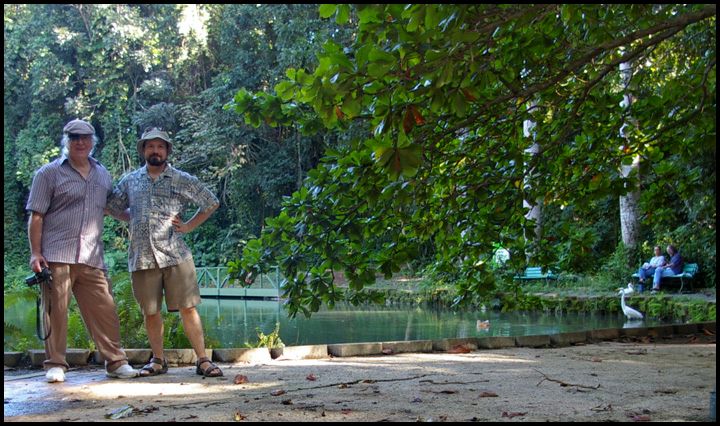
At one point I figured we'd seen about all that we could in the botanical garden, but my dad wanted to keep walking. We found this little pond, and there was a couple on a park bench by it. Just a couple feet in front of them was another (maybe the same?) great egret. This was a pretty imperturbable bird! We moved quietly closer, and saw that there were also ducks and at least one gallinule near the couple. They were eating, and tossing some bread crumbs to the birds. The ducks and gallinule were happily eating the bread. They tossed some near the egret, which took a predatory pose and struck, and came up with a big fish! When my snapshot alarm went off I set the self-timer so that I could get a shot of my dad and myself, with this story in the background.
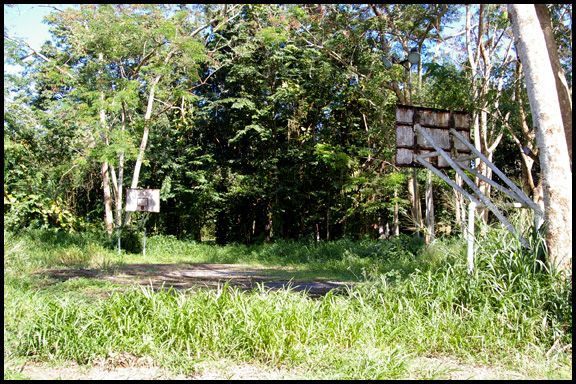
I guess the students that use the botanical garden campus aren't too into basketball lately.
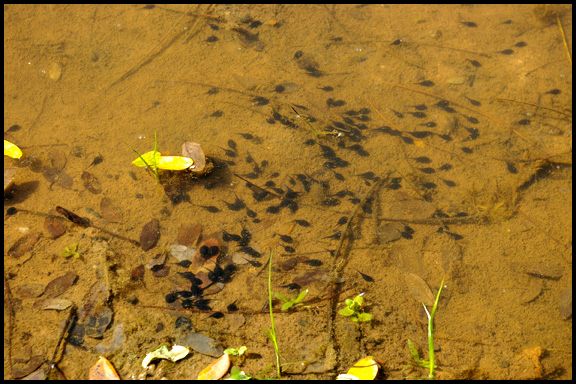
When I left the main path to get the picture of the basketball court, I found these big puddles out in the open. Dragonflies darted everywhere, and I was shocked to see tons of tadpoles!
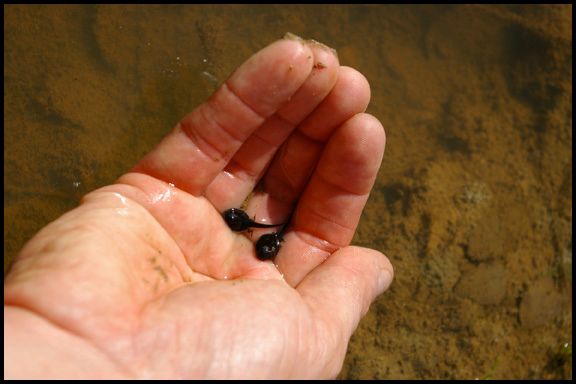
I scooped out a couple and the water was hot. I'm guessing these are toad tadpoles--maybe even marine toads, but I can't tell for sure.
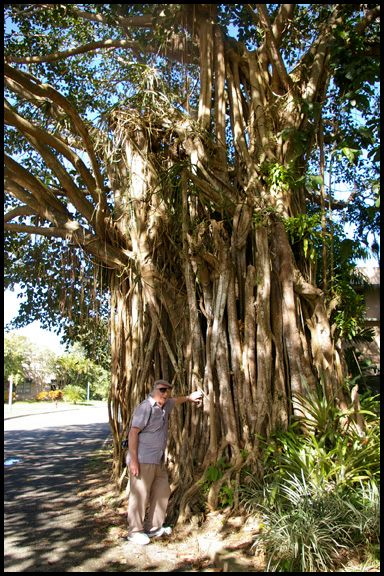
Dad poses with yet another huge fig tree.
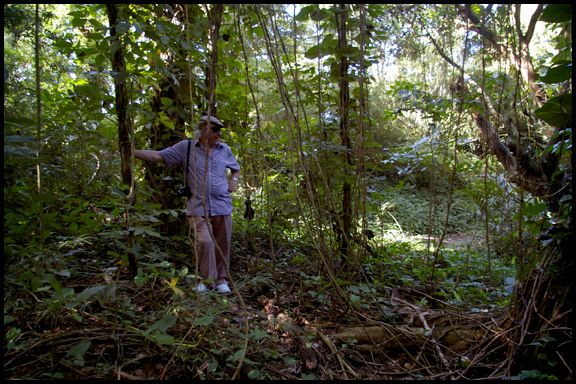
Then we headed down another path that got quickly dark and overgrown--good place for mushrooms maybe?
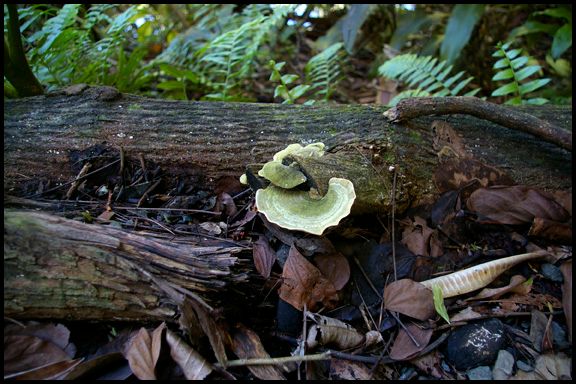
Second mushroom species encountered--some polypore with turkey tail characteristics.
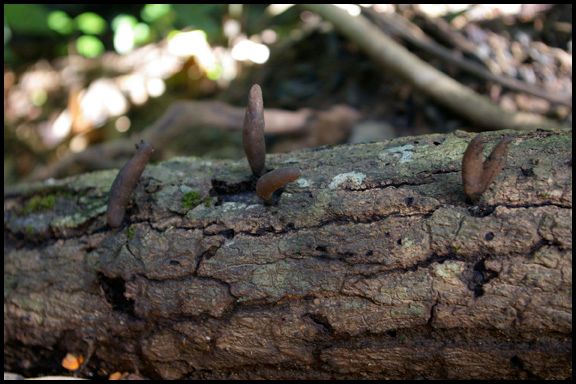
These little club-like mushrooms are new to me.
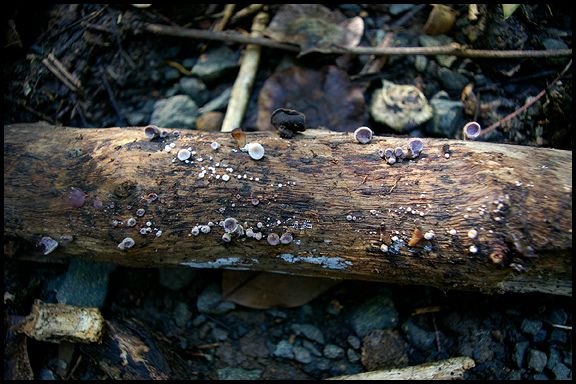
This log has a number of different cup and jelly fungi.
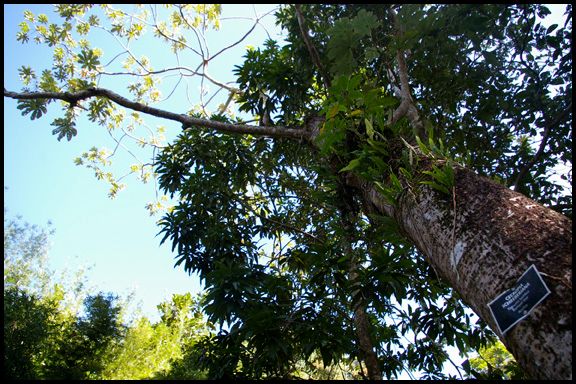
We reached a point where I thought it was too dangerous to keep going and headed out. I was happy to encounter this labeled Cecropia tree. These are very common and distinctive. When we were looking at forested hillsides we would see them, and when the wind blows on the leaves, the white underside shows, making it look like the trees have white flowers. These trees are notable for having obligate symbiotic relationships with ant species (obligatory for the ants, not the trees). Humans use the wood to make musical instruments.
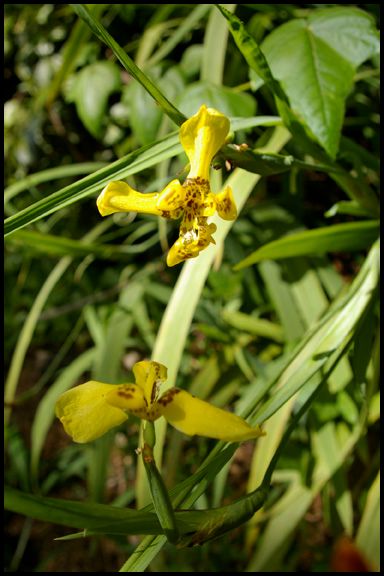
A path-side orchid.
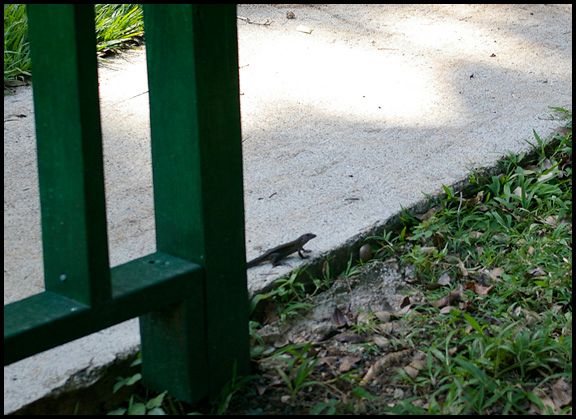
Puerto Rican ground lizard, Ameiva exsul.
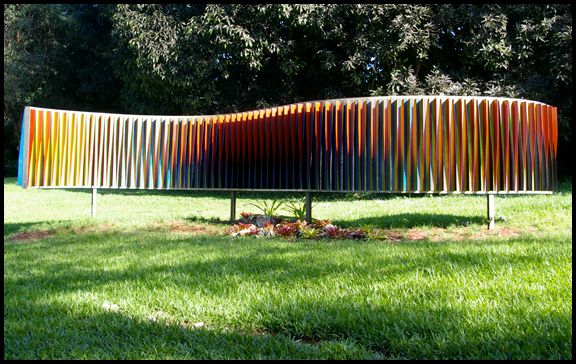
This sculpture looked best as you moved by it, and different colors would come into view.
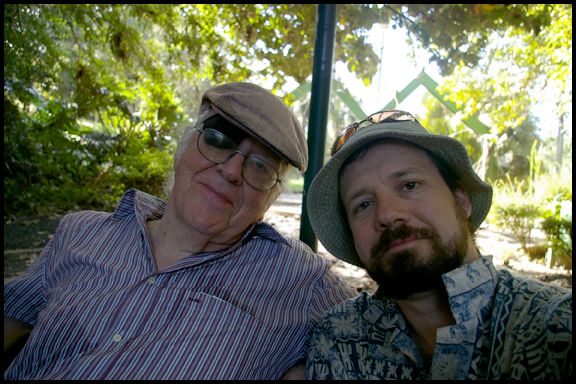
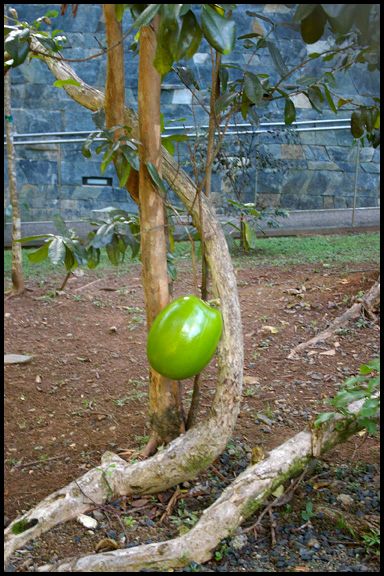
There was a medicinal plants garden, but it was locked up. This monstrous fruit was visible from outside the fence. Anyone know what it is?
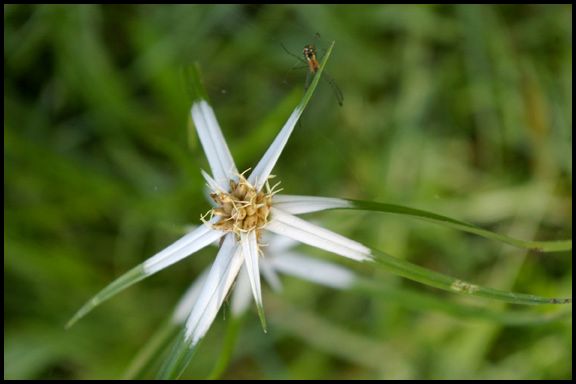
We found a patch of this grass-like plant with white markings on the flower bracts.
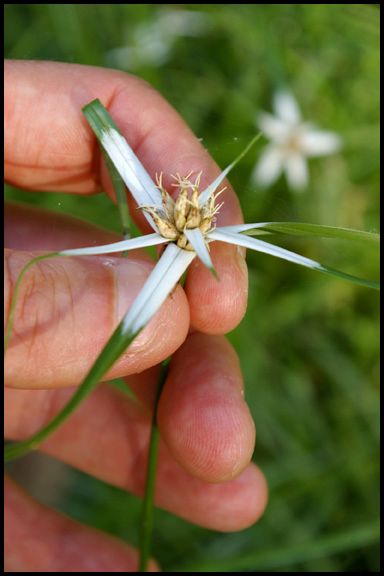
I felt the stem and it was round, and declared that it was a rush. ("Sedges have edges, and rushes are round..." begins the naturalist's mnemonic.) Since the star pattern was so distinctive, I figured that googling "star rush" would get an identification. Yes and no. It's listed as "star rush" in many places, but it's actually Rhynchospora colorata, best referred to by the common name "white-topped sedge." It's native to the area, and is also found as far north as the southern U.S. Yet another instance of living things ignoring the rules that scientists and naturalists try to impose on them.
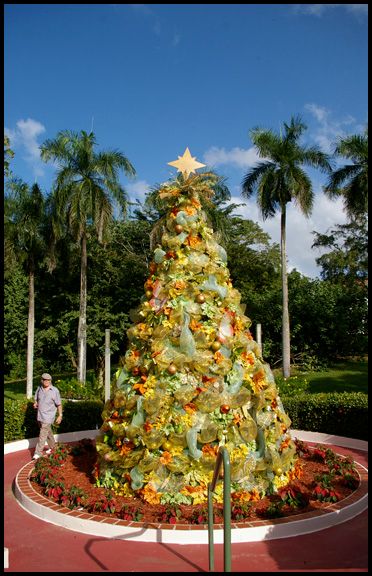
And the last stop in the botanical garden was this very impressive artificial Xmas tree. It's made out of butterflies and poinsettias, and why not?